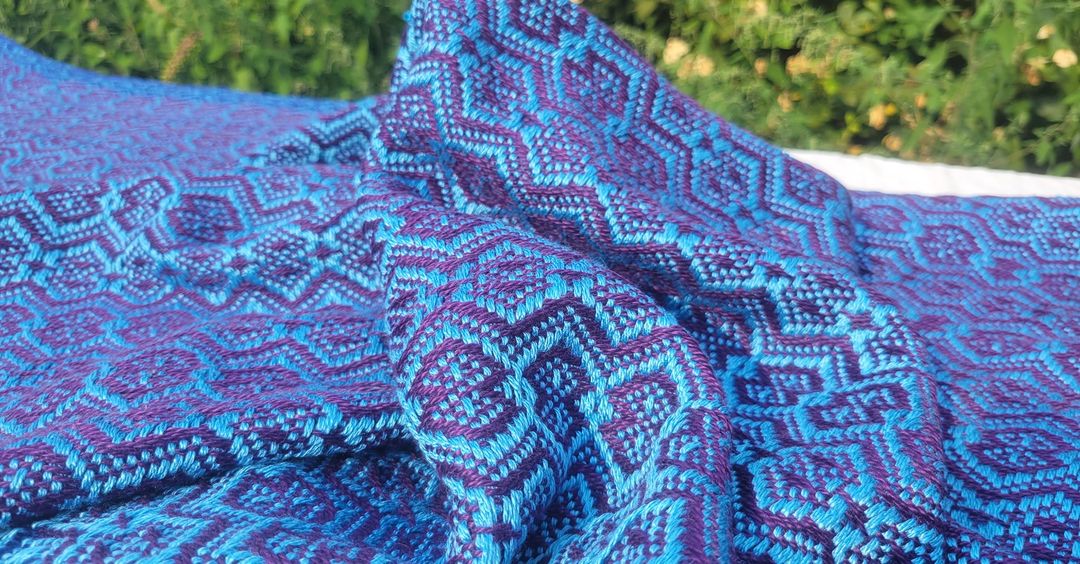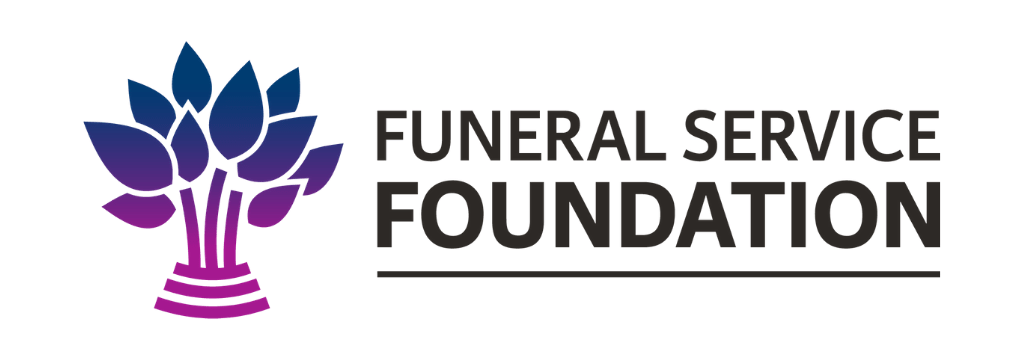Chicago Artist Crafts Beautiful Blankets for Green Burials
Think all green burials require a bland cream-colored shroud? Think again. With his hand-woven, brightly-colored burial blankets, Illinois artist Anders Zanichkowsky is proving that there is room for even more beauty and brightness in the lovely ritual of natural burial.
Zanichkowsky’s art was recently highlighted in Chicago’s Newcity Magazine, where the artist opened his home studio and shared the journey that led him to found his company, Burial Blankets. An art student with a “calm curiosity about death and a great love for religious art,” Zanichkowsky’s passions collided during his MFA studies, when he realized that textile weaving was a way to “make art that was for something sacred—not about something sacred.”
“In the first week of class, I found out my first love had died,” Zanichkowsky told Newcity. “I learned to weave making a memorial piece for him. At the end of 2020, I was sitting at the loom when the business idea fell out of my mouth, fully formed. Handwoven shrouds for green burial meant for enjoyment and reflection during life. A friend said, ‘It’s so perfect, it’s like you already do that.’”
Affirming life before death
Zanichkowsky weaves his blankets on a 47” Glimåkra countermarche floor loom from the 1970s — a bulky contraption that seems, at least in the images on Facebook and the Burial Blankets website, to take up the majority of the space.
Using hundreds of lengths of natural, biodegradable fibers of varying thickness based on his client’s requests, his blankets come in two sizes: full-size (130” x 80” — about the size of a queen coverlet, or enough to wrap around the entire body) or a single pall blanket (118” x 40” — large enough to cover the top of the body). Depending on the selected size and thickness of the thread, blankets can take up to 12 weeks to complete.
“Designs range from a pure white shroud of plain, crisp linen to an iridescent rainbow of dazzling geometric designs in the softest cotton,” according to the Burial Blankets website. “Thread can be shiny or matte, textured or smooth, and packed as tightly as a tea towel or left lacey and open. Different patterns and colors can be combined within the cloth to create stripes, blocks, and borders, and many cloths have beautifully contrasting front and back sides. The natural fibers you can choose from are cotton, linen, bamboo, and wool.”
Zanichkowsky works closely with his clients to determine sizes, colors, thread thickness, and design.
Often, these decisions are based on how a client will use the blanket before they die.
“The heart of this project is collaboration with people who want to use their own burial shroud for warmth, contemplation, and enjoyment until being laid to rest in it,” his website states. “In this way, Burial Blankets are an affirmation of life, as much or even more than they are a preparation for dying.”
Clients have used their blankets as prayer shawls, wall hangings, and bedspreads during their lives, with plans to use them as shrouds for green burials, palls, or even to cover their bodies inside a traditional casket.
Beauty beyond the blanket
As Zanichkowsky’s research and interests led him to begin creating burial blankets, he also leads his clients in discussions about their own experiences and beliefs in order to arrive at the perfect combinations of materials and design.
“Some people come with a very clear vision,” Zanichkowsky told Newcity. “For others, we start by talking about their relationship to mortality: how they think and feel about it, and what having a Burial Blanket could mean. We often talk about burial in their own family, from a recent death to ancestral practices. I listen for ways a handwoven cloth can reflect this, literally or metaphorically, and use this to tailor my suggestions so we avoid decision fatigue.”
Because the artist’s process is so hyper-personalized, each project is unique — not only the finished product, but the journey and materials used to arrive there. In fact, he welcomes his clients to visit his studio as he’s working on their blanket to watch him work, weave a portion of the blanket on their own, or observe special rituals.
“One person wanted me to use colors and shapes from a Greek family heirloom, and we got their rabbi’s advice on fibers permitted in Jewish burial,” Zanichkowsky told Newcity. “Another person dyed their own thread with plant pigments in a shamanic ritual and had me weave this into a denim cloth structure that celebrated their gender expression.”
For more information on Zanichkowsky’s Burial Blankets, visit his website, or click here to read Newcity Magazine’s story, “Weaving the End: The Art and Soul of Burial Blankets with Anders Zanichkowsky” by Vasia Rigou.




